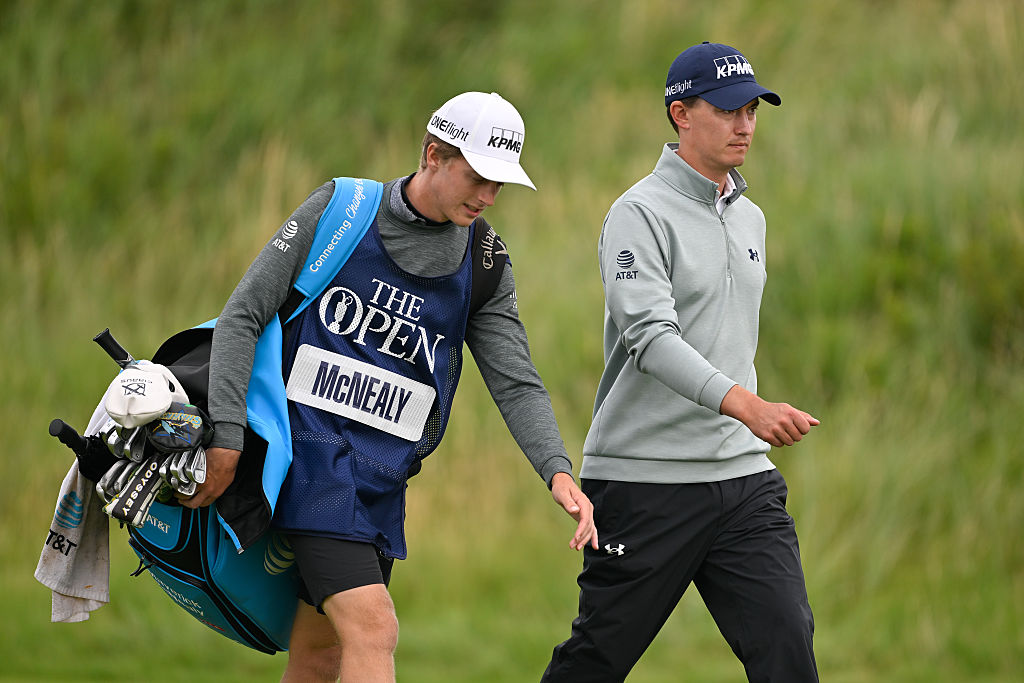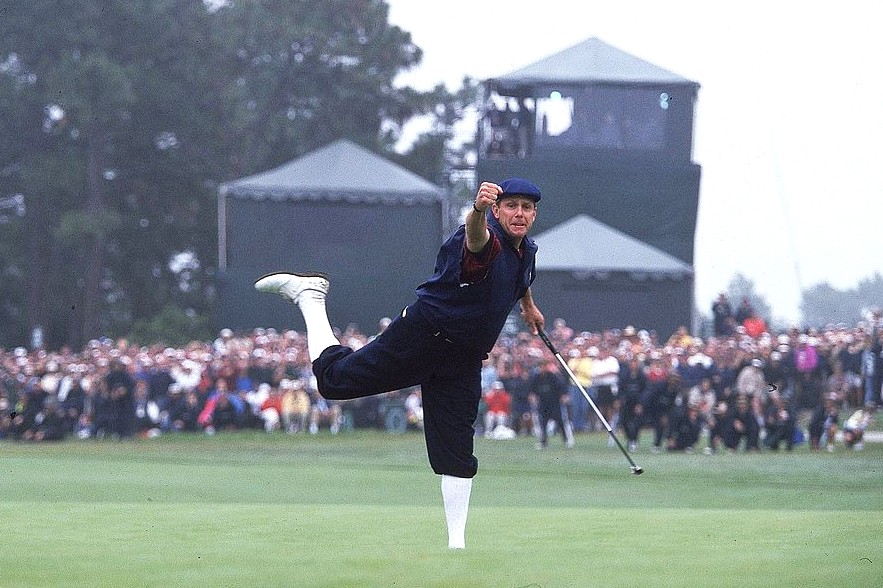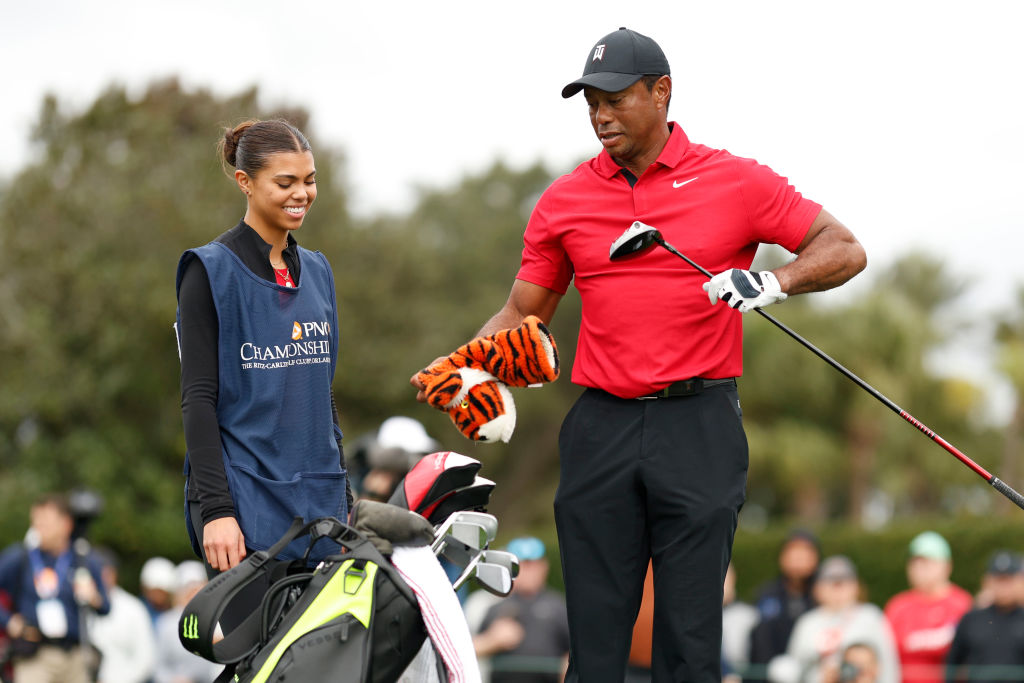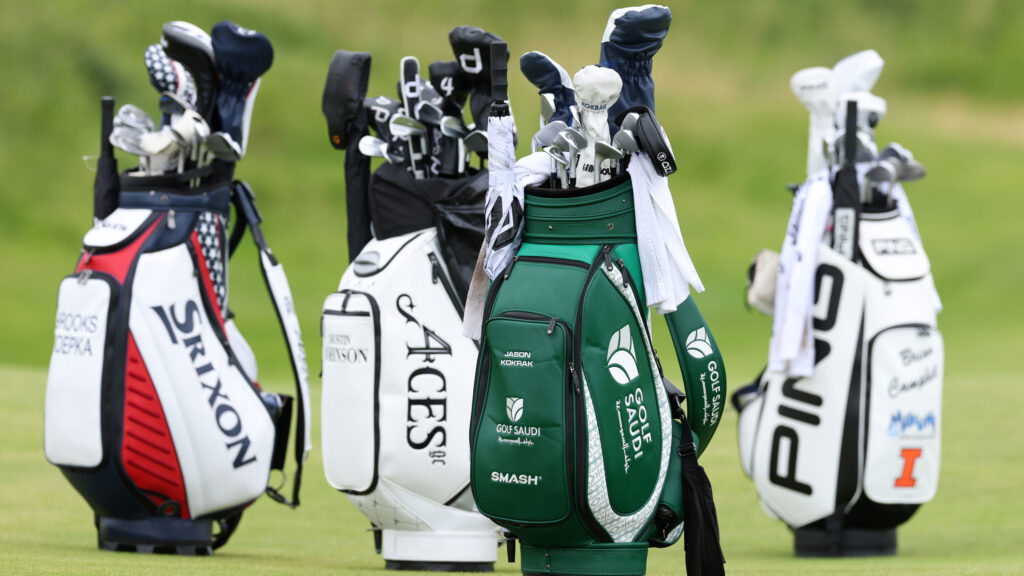For many tour pros, a club deal may well be the biggest sponsorship deal they get. But that is not the only reason they seek equipment deals.
A golfer who is sponsored by a manufacturer knows that they will get preferential treatment over someone who also uses their equipment but who is not a ‘staff player’.
Those who the manufacturer is paying to advertise and market their clubs, are the golfers it wants to do the best. So these golfers are first in the queue when it comes to equipment tweaks and the like.
Tour pro Michael Kim has explained that: “Unless you’re a top 10 player, the equipment deal will most likely be your biggest sponsor. When most of your income isn’t guaranteed, it’s a comforting feeling to have some guaranteed cash heading into the year.
“Plus, if you like their clubs, it’s a win win. A player playing with no deal has no guarantee that mixing club companies will equate to better scores so it’s a no brainer for some. Also, the attention to detail when a player is on staff can be different. When a player is a free agent, they naturally get put behind their staffed guys.”
However the landscape relating to equipment deals has changed. Manufacturers are increasingly wanting players to use their clubs throughout the set, including, if relevant, their make of ball.
Players can still find deals which will allow them to mix and match different equipment brands, but this will likely reduce their total sponsorship take.
But one company, whose reputation for making quality irons exceeded their reputation for making drivers, was not prepared to sponsor players unless the player also put their driver in the bag. For this reason, as someone from the company confided in me, this particular manufacturer was struggling to find top players who were interested in taking up sponsorship offers.
Some players are anyway happy to remain free agents, seeing an acceptable trade off between sponsorship and prize money. As Maverick McNealy, who is one of those free agents, explains: “I think the landscape has changed when they started playing for $20m purses – that changes the financial calculus.”

(Image credit: Getty Images)
Golfers can be conservative. If they find something they like and works for them, their natural instinct often is to stay with it. For this reason, some tour players will still play with older models even though their brand sponsor has brought out a new model they wish to promote.
McNealy says he had wanted to move away from being a staff player so as “to see what’s out there.”
He had been sponsored by Callaway who he describes as “an awesome partner for me turning pro … invested a lot in me, gave me a chance to invest in myself and my game, and supported me through probably the most difficult years, turning pro, complete change in your lifestyle, years on the Korn Ferry Tour, first few years on the PGA Tour.”
So what has been the result of this equipment freedom of choice? McNealy says he has naturally moved to “the brands that were in my bag in high school and just, I think, growing up. High school and college is when I got serious about the game. I don’t think it’s a coincidence that the same style of equipment that I was playing then is what I’ve gravitated back to now.”
There are many cautionary tales of players who got successful and so attracted big sponsorship contracts from a rival equipment manufacturer, accepted them – and then stopped being successful when using the new equipment.
One of the most notorious stories concerns Payne Stewart. A two-time Major winner, in 1993 he left his long-standing equipment partner, Wilson Staff, to sign a five-year deal, reputedly worth $7m, with Spalding to use its Top-Flite range.
To put this sum in context, he signed with Spalding after coming sixth in that season’s PGA Tour money list by winning $982,875.
But the following season with his new equipment, Stewart fell from 6th to 123rd on the money list. During his five years with Spalding he won one tournament. The season after leaving them he became a free agent and won twice, one of these victories was at the US Open.

Payne Stewart’s iconic celebration after winning the 1999 US Open
(Image credit: Getty Images)
The Spalding sponsorship had required Stewart to use Top Flite balls and a set of game-improvement perimeter weighted irons, a type of club designed for handicap players and which he had never previously played with.
He lost the ability to shape shots and his distance control. In 1995, Spalding allowed him to switch to forged blades, and that year he won his only tournament during his Spalding years, the Houston Open via a playoff.
His caddie, Mike Hicks said of Stewart that: “he took the money and it cost him five years in the prime of his career. There were stretches back then when he didn’t even want to play.”
Jack Nicklaus used the same MacGregor 693 3-wood from 1958 to 1995, including for all 18 of his Major wins. He did however get it regripped – once, in 1983.
“Jack hardly changed anything,” Clay Long, who was a designer who worked with Nicklaus, remembers, “and that helped him become so great. That took a variable out of the game for him.”
Tiger Woods stuck with Nike for his equipment for 27 years until the company exited the golf equipment market and he moved over to TaylorMade.

Tiger Woods at the PNC Championship with daughter Sam as his caddie
(Image credit: Getty Images)
Rory McIlroy was another who went from Nike to TaylorMade at this time, after testing out various other brands’ equipment. This was Rory’s third change of equipment sponsor, as, when he turned professional, in 2007, he had signed with Titleist, the brand he had been using in the latter part of his amateur career.
As to which player has changed equipment brands the most – well there are no records kept for such a thing, so whoever we nominate would have to be conjecture. But Byson DeChambeau must be in with a strong chance of being that person.
The man nicknamed The Scientist is constantly coming up with imaginative theories of how to play the game and how to re-design golf equipment.
The following list may well not even be exhaustive, but during his career 31-year-old DeChambeau has used equipment made by the following: Avoda, Bridgestone, Cobra, Edel, Krank, LA Golf, Ping, SIK Golf, TaylorMade and Titleist.







